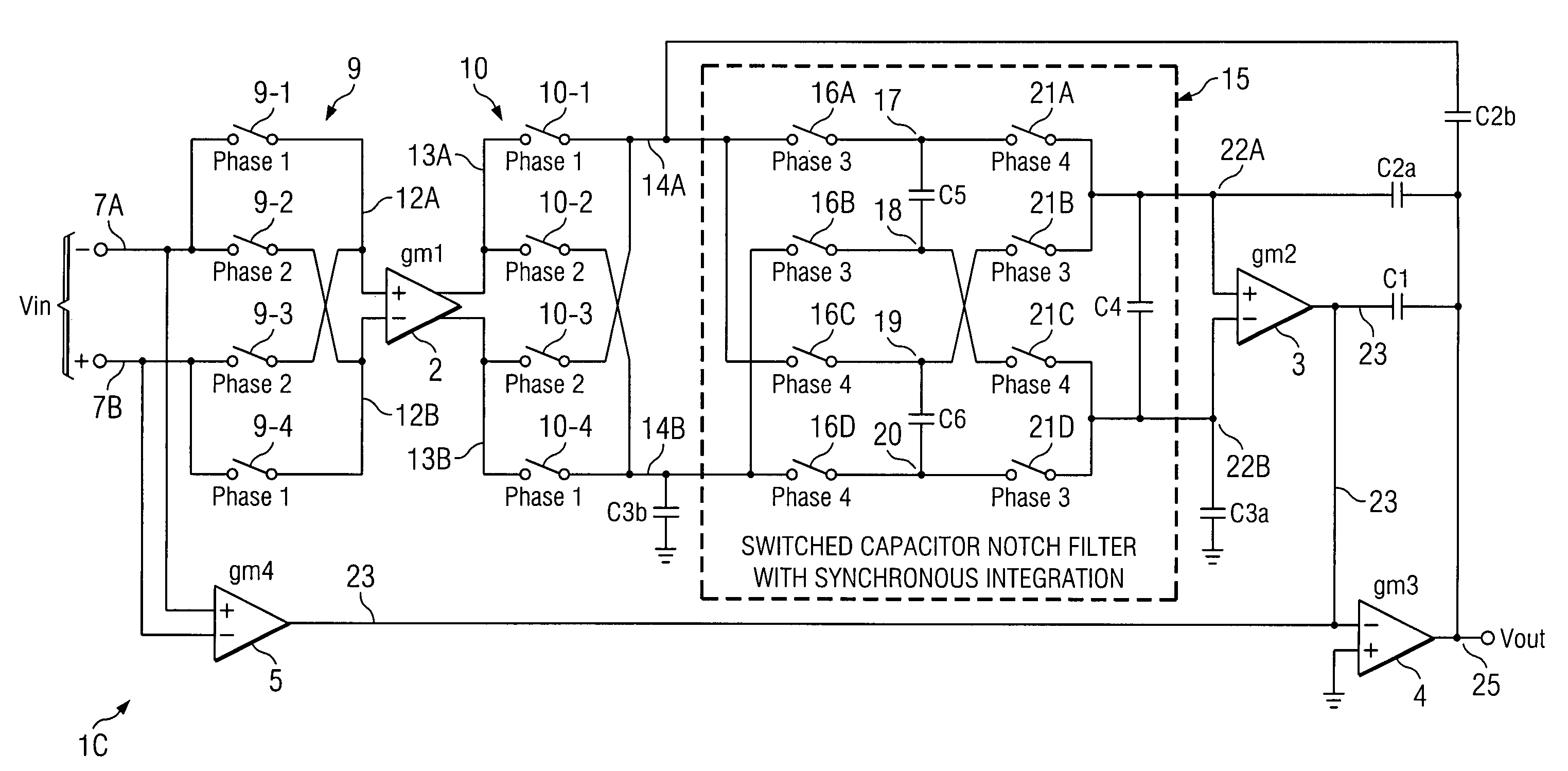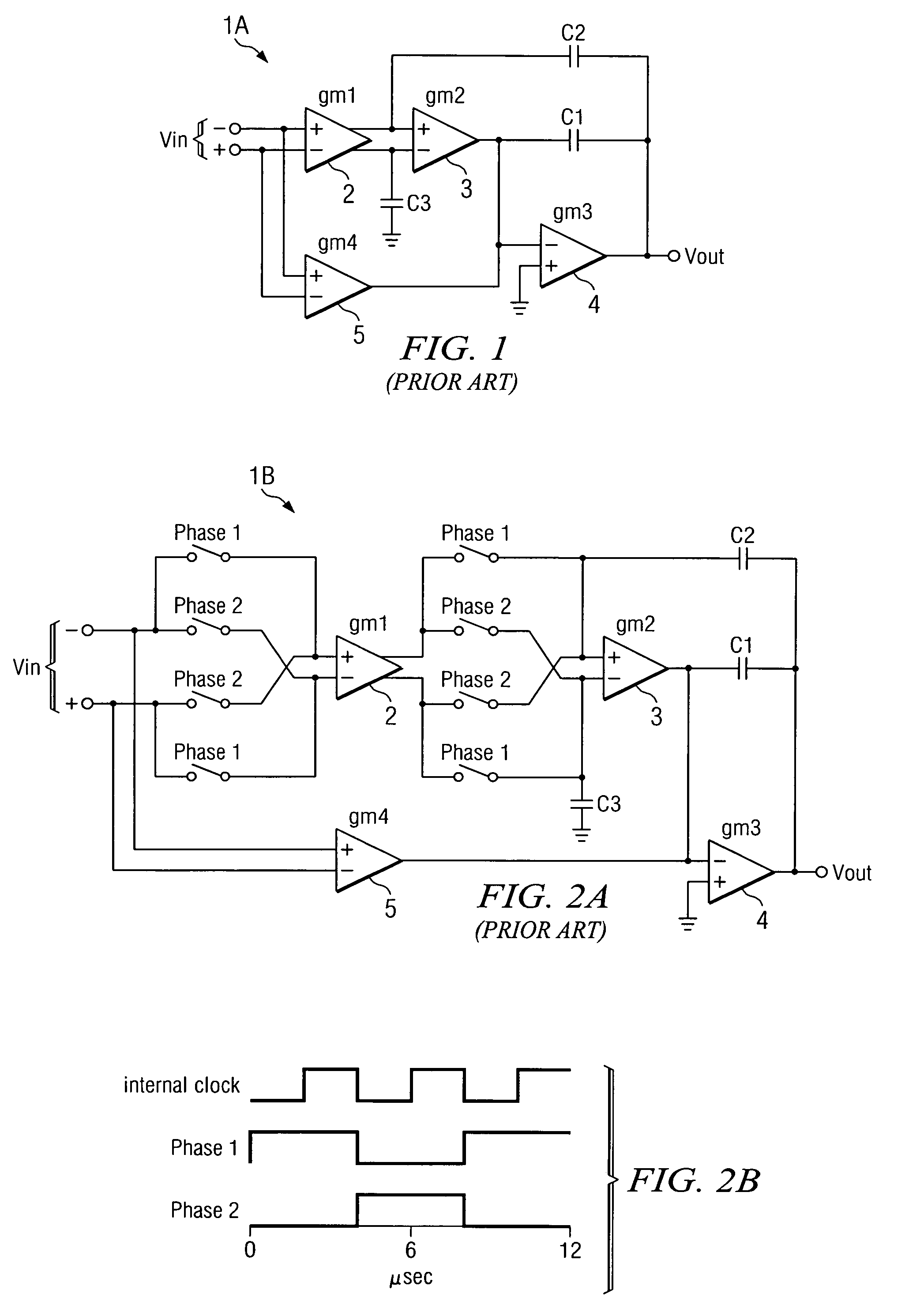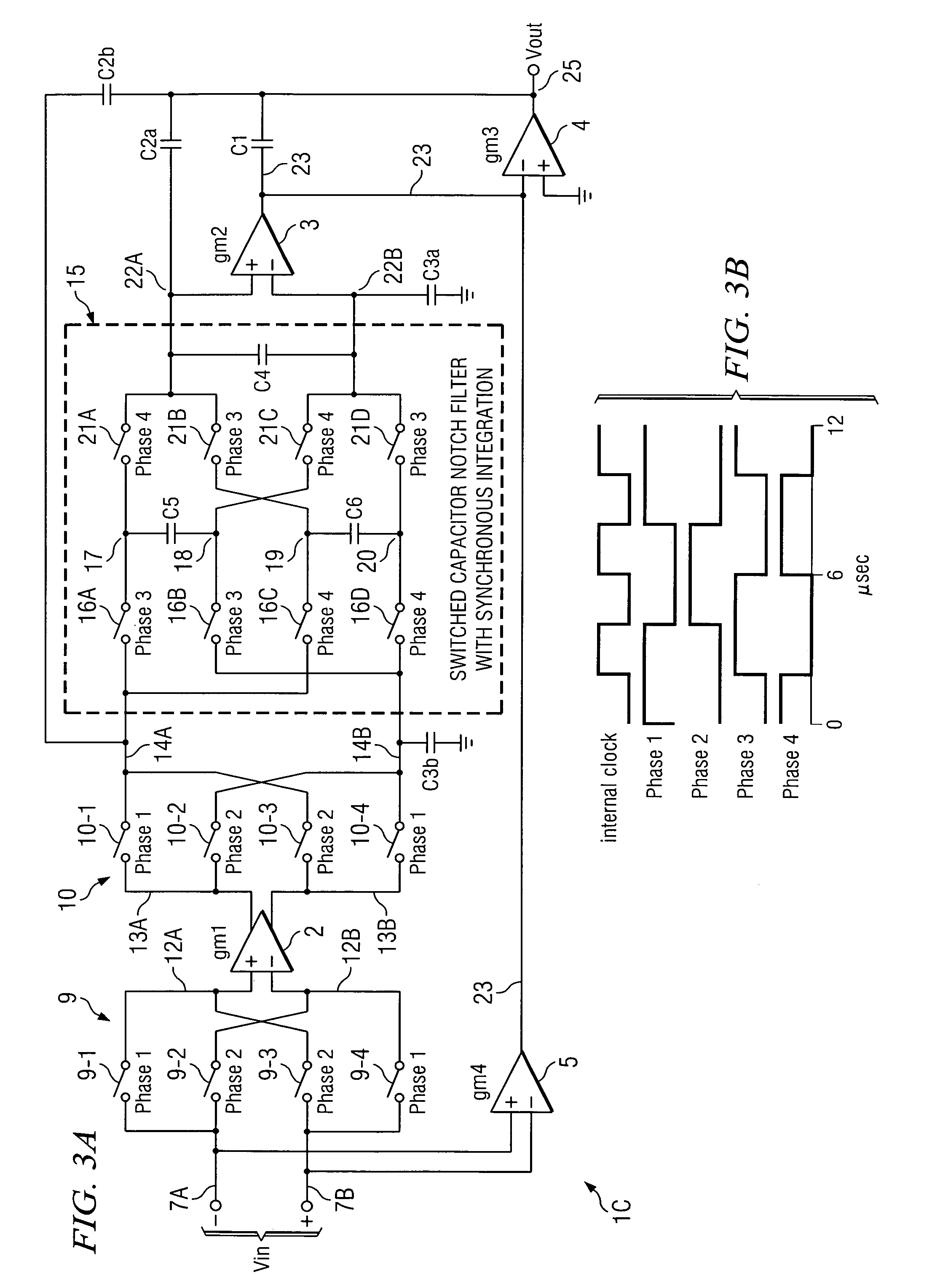Notch filter for ripple reduction in chopper stabilized amplifiers
a technology of ripple reduction and ripple reduction, which is applied in the direction of amplifier modification, amplifier using switched capacitors, and noise influence reduction through switching capacitors. it can solve the problems of low in-band noise, high in-band noise, and trade-offs between input referred noise and low in-band nois
- Summary
- Abstract
- Description
- Claims
- Application Information
AI Technical Summary
Benefits of technology
Problems solved by technology
Method used
Image
Examples
Embodiment Construction
[0023]Referring to FIG. 3A, operational amplifier 1C includes (−) input conductor 7A and (+) input conductor 7B by means of which an input signal Vin is applied to input chopping circuitry 9. Chopping circuitry 9 includes switches 9-1 and 9-2 connected to (−) input conductor 7A and switches 9-3 and 9-4 connected to (+) input conductor 7B. Switches 9-1 and 9-3 are connected by conductor 12A to the (+) input of operational transconductance amplifier 2, and switches 9-2 and 9-4 are connected by conductor 12B to the (−) input of operational transconductance amplifier 2. Output conductors 13A and 13B of operational transconductance amplifier 2 are connected to output chopping circuitry 10, which includes switches 10-1 and 10-2 connected to conductor 13A and switches 10-3 and 10-4 connected to conductor 13B. Chopper switches 10-1 and 10-3 are connected to conductor 14A, and chopper switches 10-2 and 10-4 are connected to conductor 14B. The chopped output of operational transconductance am...
PUM
 Login to View More
Login to View More Abstract
Description
Claims
Application Information
 Login to View More
Login to View More - R&D
- Intellectual Property
- Life Sciences
- Materials
- Tech Scout
- Unparalleled Data Quality
- Higher Quality Content
- 60% Fewer Hallucinations
Browse by: Latest US Patents, China's latest patents, Technical Efficacy Thesaurus, Application Domain, Technology Topic, Popular Technical Reports.
© 2025 PatSnap. All rights reserved.Legal|Privacy policy|Modern Slavery Act Transparency Statement|Sitemap|About US| Contact US: help@patsnap.com



